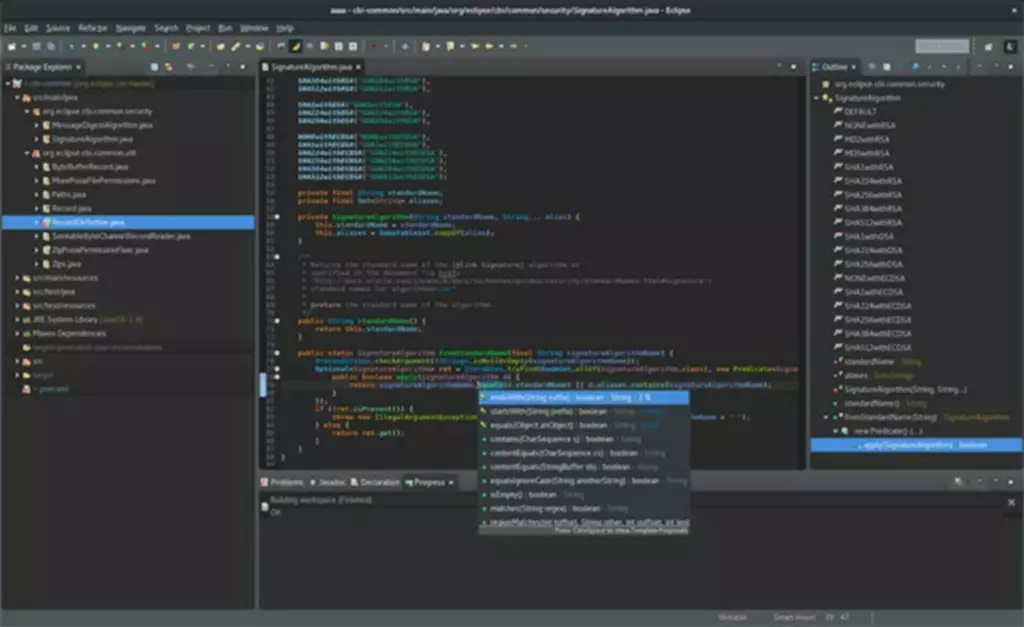This article introduces SQL and its interplay with relational databases. It discusses the language, offers examples, and contextualizes it with different languages you might encounter. The set of DDL commands, corresponding to CREATE, ALTER, DROP, and TRUNCATE is used to create, handle, and modify the construction of database objects. The set of DML commands, corresponding to INSERT, UPDATE, and DELETE is used to govern knowledge inside the database. DDL statements are used to define and manage the structure of the database objects.
Forms Of Queries In Sql
- The ORDER BY clause is used to sort ends in ascending ( ASC) or descending ( DESC) order.
- This design is good for complex queries of structured information.
- You also can consider taking programs to gain certifications like Meta’s Database Engineer Professional Certificates.
- Next, start building a database so you can work with instructions and learn syntax.
Data Definition Language (DDL) commands are used to handle and outline the database utilizing the CREATE, ALTER, DROP, and TRUNCATE commands. DQL statements concentrate on querying and retrieving information from the database. Indexes velocity up searches by allowing the database to seek out rows sooner as an alternative of scanning the complete desk. The JOIN clause is used to combine rows from two or extra tables primarily based on a associated column. The WHERE clause is used to filter knowledge and retrieve solely the rows that meet specific situations. At final, it is the client determined criteria that inform the database what the dedication is to be founded on.
Understanding the assorted types of SQL queries is crucial for anyone looking to handle or analyze information effectively. In this beginner’s information, we’ll explore the several varieties of SQL queries and how they can be utilized to retrieve and manipulate information in a database. Information Definition Language helps you to define the database structure or schema.

⃣ Sorting By A Number Of Columns
Keywords could also be verbs (“create”) or nouns (“desk”), serving to to make their operate more obvious. Usually, they combine, similar to with CREATE TABLE or DROP TABLE. Used to group rows which have the identical values in specified columns. In this text, we’ll dive deep into SQL queries – what they are, why they matter, and the way you should use them successfully across completely different situations. We will cover varied forms of SQL queries, provide syntax, and walk by way of sensible examples.

Keep monitor of your favorite trails and their attributes (distance, problem, trailhead locations, and so on.) in a database. In the above example, the SQL question calls the saved process ‘get_employee_info’ with the argument ‘123’. It will retrieve and display the content material saved in the process with respect to the employee ID 123 from the staff desk. In Microsoft Entry, a parameter query works with different types of queries to get no matter outcomes you are after.
Be Taught how SQL queries entry, handle, and retrieve data within a database. This command is used to insert knowledge into the row of a table. NULL means “no value.” It’s totally different from zero or an empty textual content. This question finds customers whose cellphone column has no value saved.
Sql Queries
It doesn’t retailer data itself but makes complex queries look easier. Create a temporary, named outcome set that you must use within a single query. This command grants the consumer user_name the permissions to pick and replace records within the workers desk.
⃣ Filtering Data Using The In Operator
A unique kind of query is named an mixture query. The more you use these commands, the better it will turn out to be to get the database to do precisely what you want. Amongst these, queries, especially the SELECT command, are the way you https://deveducation.com/ ask the database for information. This revokes the privilege to delete data from the “Customers” table from the “Sales_Team” role.
Software or pc professionals commonly use SQL queries to ensure relational databases properly talk with web sites or functions. Nevertheless, many other forms of professionals profit from using SQL queries to entry, analyze, and interpret knowledge for various firms. All the RDBMS techniques like MySQL, MS Access, Oracle, Sybase, Postgres, and SQL Server use SQL as their normal database language. SQL programming language makes use of various instructions for different operations. We will learn about the like DCL, TCL, DQL, DDL and DML instructions in SQL with examples.
They are used to insert, update, retrieve, and delete knowledge throughout the tables. SQL JOIN operations let you retrieve knowledge from a number of tables based mostly on related columns. Let’s dive into several types of joins with examples. SQL commands are the keywords that inform the database what type of motion to perform, like CREATE, SELECT, or INSERT.
Understanding SQL queries is crucial for anybody excited about data analysis, database management, or uncovering business insights by way of information. SQL (Structured Question Language) is a domain-specific language used for managing and manipulating relational databases. In SQL Server, a question is a press release or command that you simply use to interact with the database to retrieve, insert, replace, or delete information. SQL queries are an integral part of working with SQL Server and are used for a variety of database-related duties. A question is the backbone of each Question language and the databases.
A transaction is a sequence of one or more SQL statements which may be executed as a single unit of work form of basic sql query. DCL statements are concerned with granting and revoking permissions to customers and roles. They guarantee knowledge security and manage entry to the database. Window functions perform calculations across a set of desk rows that are associated to the current row, without collapsing the outcome set like GROUP BY.
This textual content was generated using a big language mannequin, and choose text has been reviewed and moderated for purposes similar to readability. Co-related queries also called as synchronized queries during which the query from outer facet will execute first. Write a query to find second highest salary of Worker. Create a desk named Employee_master with Emp_No and Employee_name column. These queries allow you to work with missing knowledge, dates, and find issues like duplicates.